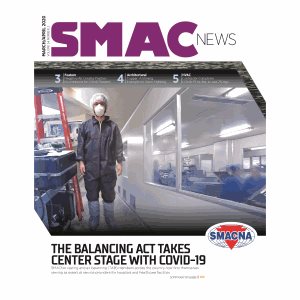The Balancing Act Takes Center Stage with COVID-19
SMACNA testing and air balancing (TAB) members across the country now find themselves serving as essential service providers for hospitals and healthcare facilities.
SMACNA testing and air balancing (TAB) members across the country now find themselves serving as essential service providers for hospitals and healthcare facilities.
While companies were busy adjusting operations and learning to adapt within the new COVID-19 environment (and its impact on businesses, employees) at the start of the pandemic, many SMACNA members like Fisher Balancing Company in Williamstown, New Jersey, had a team assembled and ready to go for essential work at hospitals in their markets. For Fisher Balancing Company and other TAB contractors, responding to testing and balancing needs in this pandemic is just like any other day — almost.
Fisher Balancing Company as an Expert
Fisher Balancing Company has long been an expert in the industry as a certified member of the National Environmental Balancing Bureau (NEBB) and the Testing, Adjusting and Balancing Bureau (TABB). For more than 20 years, the company has worked with building owners, maintenance personnel, engineers, construction managers and mechanical contractors across numerous industries to provide customers with balanced systems and resources to meet their HVAC and environmental needs. The company performs important testing and balancing work year-round that is especially critical in the healthcare space, as it makes the air as safe as possible while preventing the unnecessary spread of contagions like COVID-19.
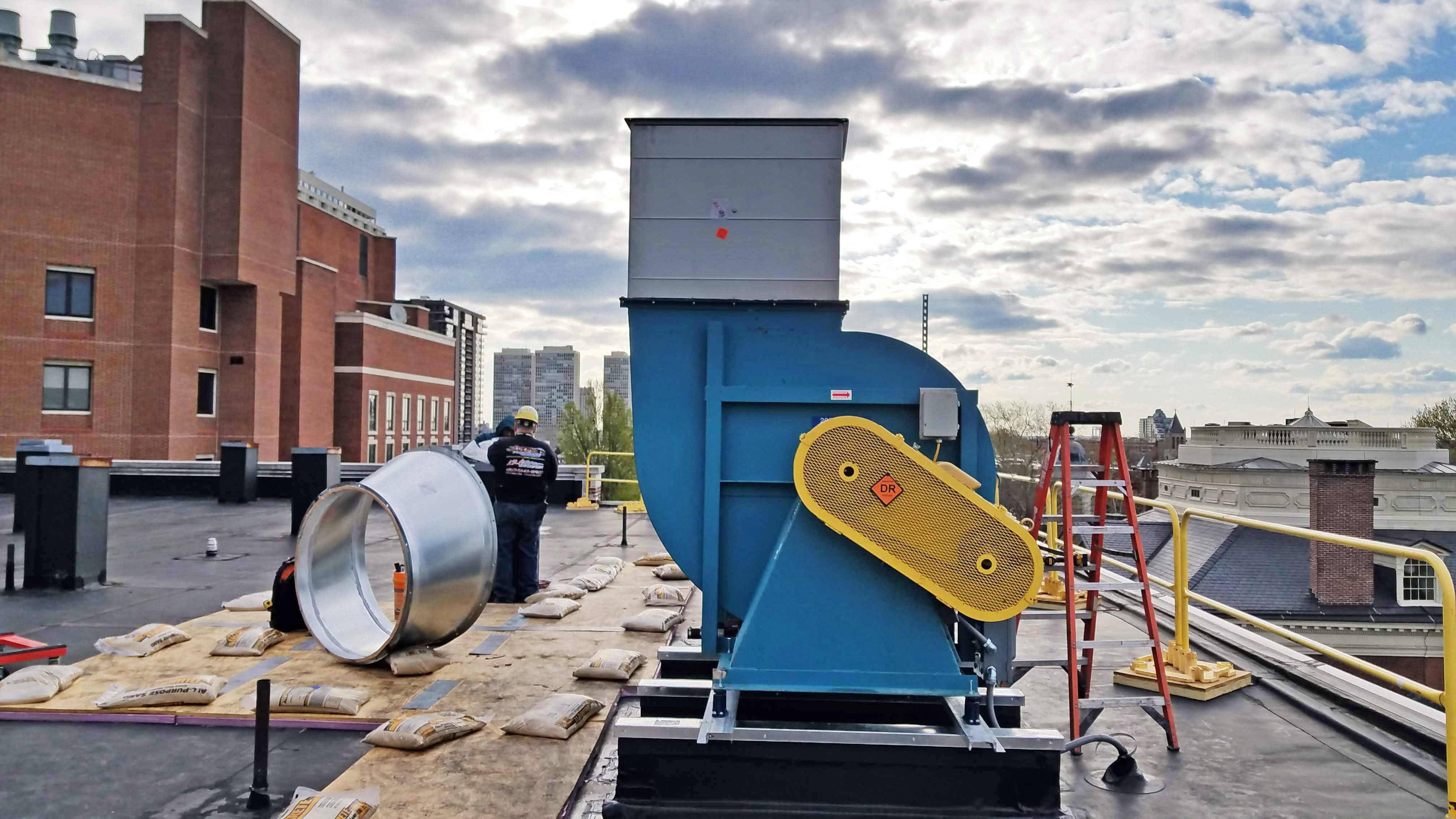
As hospitals continue to turn hundreds of individual rooms into isolation rooms, or COVID-19 suites, testing and balancing professionals are now among the first people called in to ensure the air in each room never enters another room, protecting the health and safety of patients and healthcare professionals. That is where TAB contractors like Fisher Balancing Company come in.
Pandemic Work Being Done
During the pandemic, Fisher Balancing Company technicians are flipping standard ICU rooms into negative air pressure rooms. They do this by modifying airflow, switching rooms to have negative pressure, and verifying the number of times air changes in the room to ensure overall health and safety. In fact, Fisher Balancing Company has a calculation to find air change per hour in a cubic foot and assess how long it takes for air to settle to determine the necessary time to flip patients in a room for constant use.

The CDC recommends that single-patient airborne infection isolation rooms, or AIIRs as they are called, have negative pressure relative to the surrounding areas. Air should be exhausted directly to the outside or filtered through a high-efficiency particulate air filter directly before recirculation. This guidance is in place to isolate people with a suspected or confirmed airborne infectious disease and help minimize person-to-person transmission.
“This is what we’ve all trained for,” said Fisher Balancing Company employee Jennifer Lohr.
As a journeyperson by trade specializing in air balancing within hospitals, Lohr has had 13 years of training and
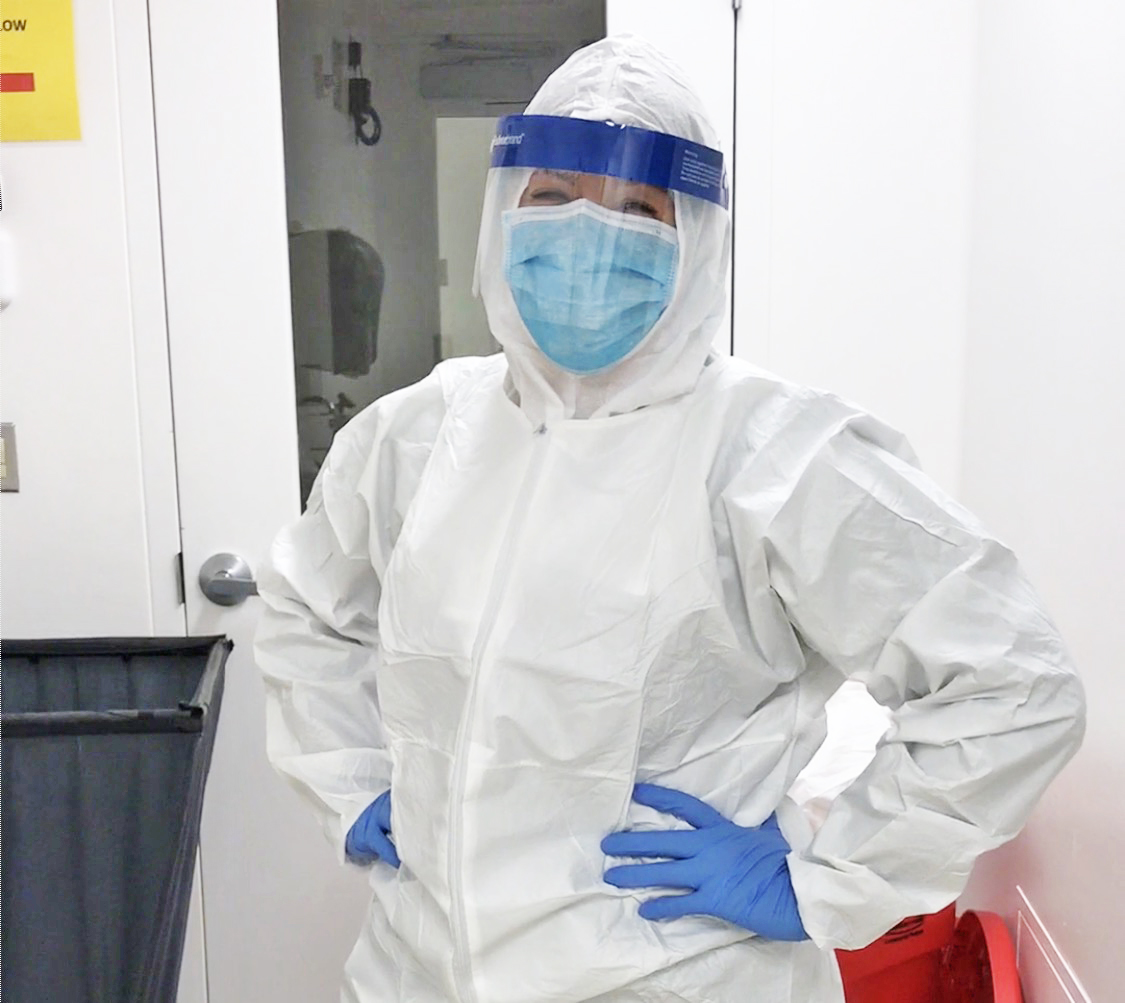
Lohr, a TAB technician working at hospitals and in healthcare facilities, wears full protective gear on the job.
expertise. Airflow maintenance and room pressurization aren’t different from her day-to-day responsibilities, but in a global pandemic, she is tasked with flipping many rooms in a short amount of time. For the last several weeks, she and her colleagues have been pulling 14-hour days, a few 24-hour shifts and are permanently on-call at several area hospitals and healthcare facilities.
“Usually, we are the last people involved in a construction project before the owner takes occupancy,” she said. “No one sees us — sometimes they call us the ‘Air Ninjas.’ Now, we are the first person in, and people are turning to us first to flip COVID units on a tight schedule and keep the air properly maintained for patients, doctors and nurses.”
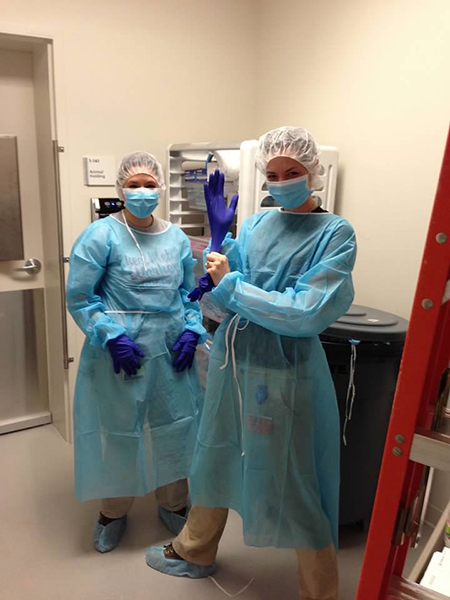
Jennifer Lohr (r) with her sister, Lisa, who also works in the sheet metal industry.
Fisher Balancing Company has existing relationships with regional hospitals and an understanding of the mechanical systems of those facilities. Since customer service is a priority for the company, it delivers when healthcare customers ask for help — especially for something like COVID-19.
How Fisher Balancing Company Is Staying Safe
To ensure safety of its technicians as well as those in the hospital setting (including doctors, nurses, patients and caregivers), Fisher Balancing Company has implemented several safety policies and protocols in line with CDC guidelines and also provides testing equipment and transportation for workers.
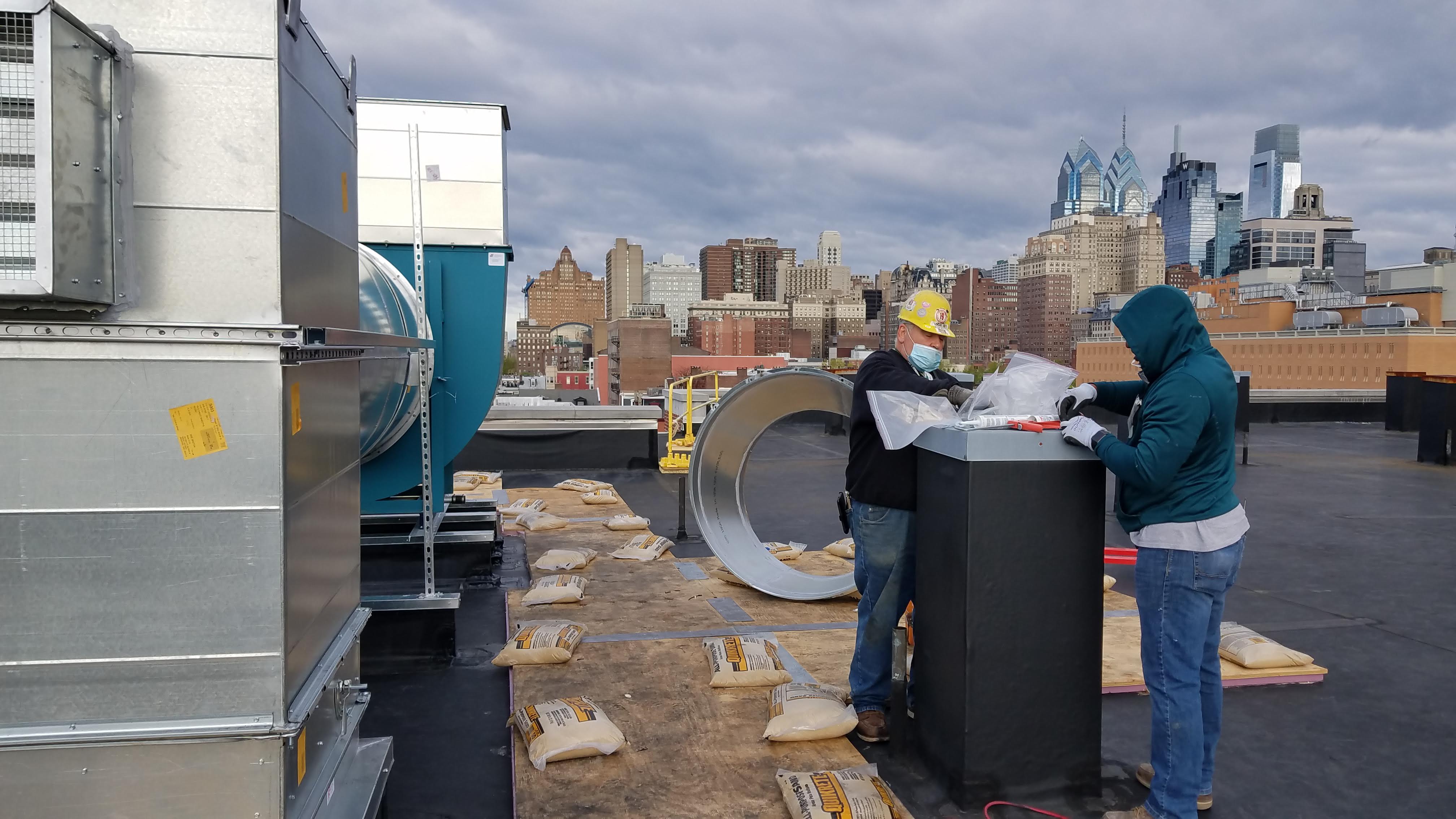
Technicians are more cautious and careful working within a compressed schedule, practicing social distancing, taking shifts to complete work, and utilizing appropriate personal protective equipment while on the job. Many have established an after-work routine to sanitize clothing, put belongings in a sterilizer, and take a hot shower before seeing their families. This is something Lohr was doing long before COVID-19 given her constant work at hospitals surrounded by germs and contagions.
Results and Recognition for a Job Well Done
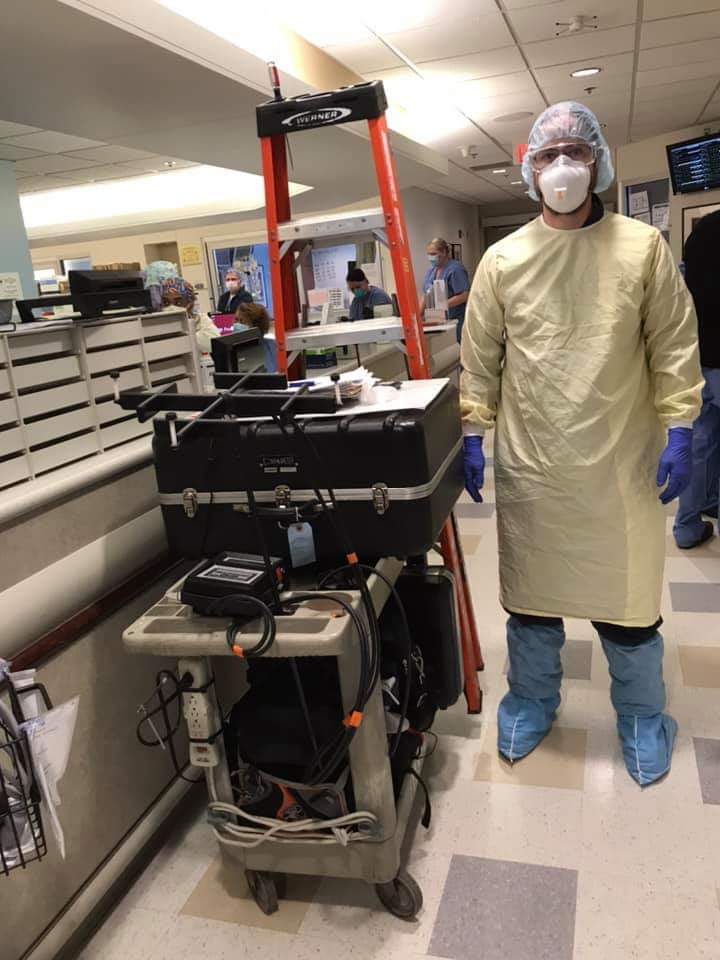
Testing and balancing is critical for hospitals and healthcare facilities to maximize the effectiveness of their existing HVAC systems and the need for this essential work will only increase as the pandemic evolves. It is far from over, but if you talk to Matt Sano, president of Fisher Balancing Company, about the work being done and progress he has seen from his team thus far, he only beams with pride.
“At all times, but especially during COVID-19, our employees put a lot of pressure on themselves to do good work at these hospitals because they know it makes a difference,” said Sano.
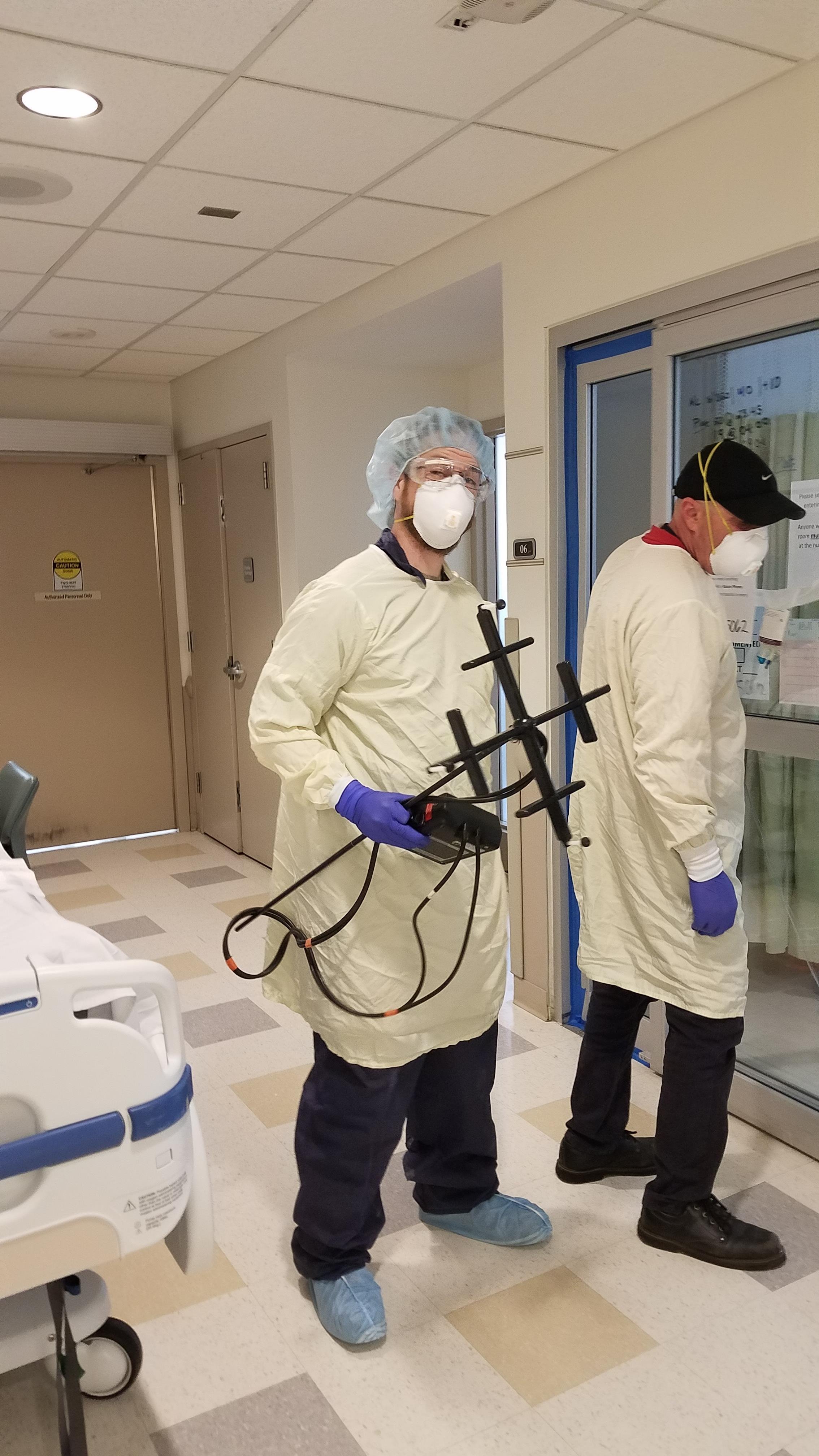
Sano isn’t the only one supporting his employees. In fact, doctors and nurses recently gave Fisher Balancing Company technicians a standing ovation for their work on a COVID-19 floor. While it may seem like a small token of appreciation, receiving recognition from frontline healthcare workers is humbling and goes to show how essential the sheet metal and HVAC industry — and its professionals — are in times of need.
Sano sees this pandemic work as an opportunity to highlight a career that many people didn’t know about before and point to a different type of essential work. “Knowing our employees are helping as many patients and healthcare workers as possible makes it worth it,” said Sano.
Published: March 31, 2020
IN THIS ISSUE
Capitol Hill Update: Pension Reform Amid COVID-19 Legislative Frenzy
Contractor Completes COVID-19 Facility in Just 21 Days
Copper: A Shining Example for Germ Fighting
As scientists look for ways to battle the highly contagious coronavirus directly through vaccines, other researchers are studying copper as as a way to potentially prevent its spread in everyday settings.
Covid-19 Ripple Effects: Turning Crisis into Opportunity
What can we do as construction business owners, post-pandemic, to survive and thrive while the country climbs out of this mess?
Jason Watson Promoted to Executive Director, Labor Relations
Jason Watson has been promoted to executive director of labor relations at SMACNA National effective April 26. He previously served as director of labor relations at SMACNA for more than 15 years.
Mobilizing for the Future: Asset Management
As the world experiences increased uncertainty due to the COVID-19 pandemic, the importance of the construction industry in maintaining a robust civil infrastructure has been heightened.
Negative Air Creates Positive Environment for COVID Patients
As medical facilities deal with an unprecedented influx of patients in the wake of a global pandemic, SMACNA contractors that specialize in negative airflow HVAC system installation and maintenance are in high demand.
President's Column: Together, From A Distance
Showing Up as Your Best Self
Symptoms of a Slowdown?
The spread of a highly contagious virus has forced many industrial SMACNA contractors to adapt to a suddenly uncertain future.
The Balancing Act Takes Center Stage with COVID-19
SMACNA testing and air balancing (TAB) members across the country now find themselves serving as essential service providers for hospitals and healthcare facilities.
Wi-Fi Becoming the Standard for Home Thermostats
The ubiquity of Wi-Fi technology has played a major role in bringing the cost of wireless-networked thermostats down dramatically.

